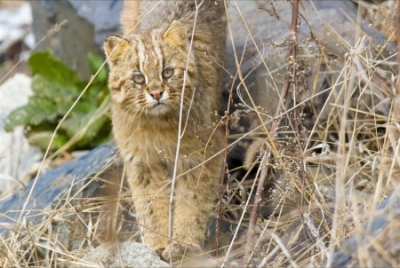
The Amur leopard is a leopard subspecies native to the Primorye region of southeastern Russia and northern China. It is listed as Critically Endangered on the IUCN Red List. In 2007, only 19–26 wild leopards were estimated to survive in southeastern Russia and northeastern China. It was considered as one of the rarest cats on Earth.
Amur leopards are solitary, unless females have offspring. Records from camera-traps indicate that they are more active during the day than at night and during twilight, both in the summer and winter seasons. This activity pattern coincides with activity of prey species such as Siberian roe deer, sika deer and wild boar.
The Amur leopard is threatened by poaching, poaching of prey species, habitat loss and deforestation or exploitation of forests. Its natural habitat is threatened by forest fires and construction of new roads. Due to the small number of reproducing Amur leopards in the wild, the gene pool is so reduced that the population is at risk from inbreeding depression. In 2015, a wild Amur leopard was found with canine distemper virus in Primorskii Krai. The small population is possibly exposed to domestic or wild disease carriers and transmitters.
Tigers can eliminate leopards if densities of large and medium-sized prey species are low. Competition between these predators supposedly decreases in summer, when small prey species are more available. In winter, conditions are less favorable for tigers and the extent of trophic niche overlap with that of leopards probably reaches its peak.
Picture Credit : Google



